Rydzyna
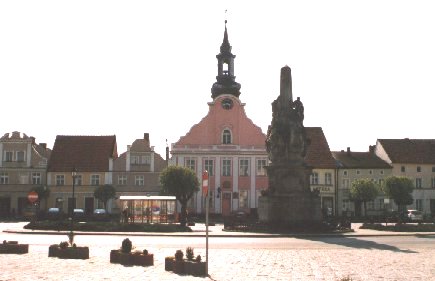
Rydzyna. The square with the town hall
Distance
Population
2.789 (2017)
Location and history
The small town of Rydzyna is located in the Leszno district in the southwest of the Wielkopolska region. The area of the municipality is beautifully landscaped with considerable forest and meadow land and attractive opportunities for cycling and hiking, horse riding and kayaking.
The city was founded in the 15th century. by Jan of Czernina (of the Wierzbnów genus), knight under King Władysław Jagiełło. Towards the end of the 17th century. owned the town and the area around it by the prominent Polish generals Leszczyński and Sułkowski.
Tourist attractions
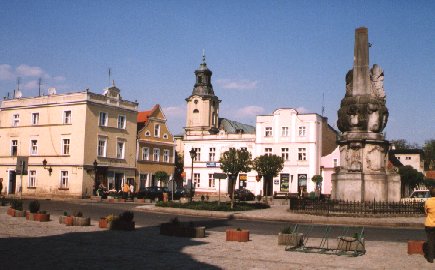
The city center with the church in the middle of the picture
The city center itself is protected due to the well-preserved urban environment from the 18th century. and the many conservation-worthy buildings. The city is sometimes called “the pearl of the Polish baroque”. The largest and most valuable building is the castle of the 17th century.
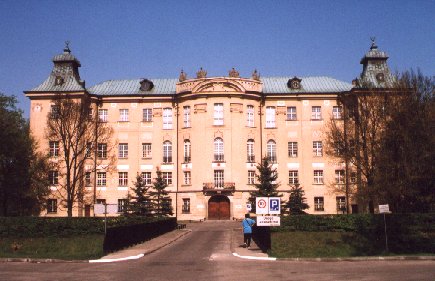
The castle in Rydzyna
The castle in Rydzyna is built at the end of the 17th century. on the foundation of a former Gothic castle from the beginning of the 15th century, erected for Jan by Czernina. The Baroque castle is a work of two Italians living in Poland: Józef Szymon Bellotti and Pompeo Ferrari. The castle's first owners were the genus Leszczyński. Along with the park, the building was the main residence of Wielkopolska. In 1705-09 King Stanisław Leszczyński lived at the castle in Rydzyna. During the war of 1709 part of the castle burned. Stanisław Leszczyński sold the castle to Aleksander Józef Sułkowski. The new owner restored the castle's old splendor and added new features in the rococo style. The construction works were led by architect Karol Marcin Frantz. The first residence in Rydzyna was in 1780’is an important cultural center in Wielkopolska. At the second part of Poland, the area came under Prussia and when the last prince of the Sułkowski genus died childless in 1909, the castle was taken over by the German state. After 1919, the Rydzyna area became part of the new Polish state. In 1928 the castle was designed for high school and boarding school for young men (Gimnazjum im.Sułkowskich). During the German occupation in World War II, the castle became boarding school for Hitler youth. In late January 1945, the castle was severely damaged by fire. After the war, the castle was owned by the Polish state, but in 1970 it was taken over by the Federation of Polish Engineers and Mechanical Engineers (SIMP) who rebuilt and restored the castle. The reconstruction work was completed in 1989. The castle, now named after the new owners “Zamek SIMP w Rydzynie” was awarded a prize in 1994 by the international organization Europa Nostra in recognition of the successful restoration of the magnificent Baroque castle. The castle of Rydzyna today houses a hotel. In the large castle there are many halls, such as the Ballroom, the Knight's Hall, the Four Seasons Hall and the Hunt Hall, all richly equipped. The building as a whole can be inspected by prior arrangement.
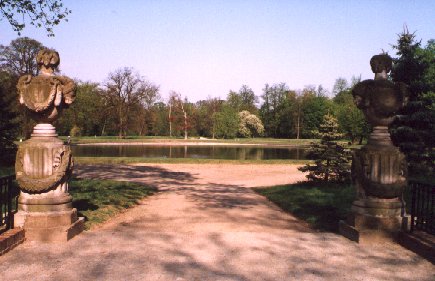
Slotsparken
Square with baroque-style houses.
The parish church consecrated to St. Stanislaus in Baroque style.
The former evangelical church.
The Rococo figure of the Holy Trinity is a votive gift after the plague epidemic in 1709.
Castle annex buildings. The monumental former annex buildings are built in a classicist style.
All the listed buildings in Rydzyna are built by prominent architects and builders from various European countries.
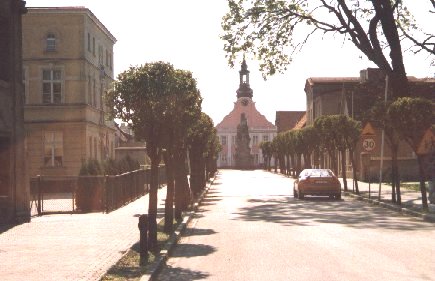
The avenue between the castle and the city
Accommodation
Other Internet sites and sources
Gmina Rydzyna (Polish, English, German)
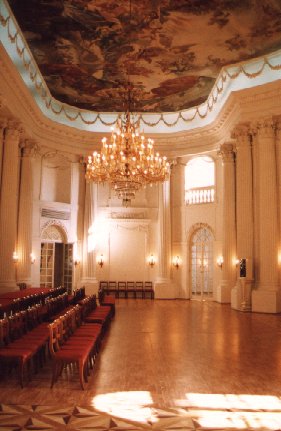
The castle in Rydzyna. The ballroom
Translated into English by Google Translate. Spangshus.dk accept no liability for any errors or omissions in translation.
Map

Rating
Search
Most used tags
churches (205) Castles (86) Monasteries (79) Town walls (74) Lakes (71) Town halls (67) Rivers (65) Castles1 (62) Mansions (55) Museums (51) Regional museums (38) Town gates (36) Abbey churches (35) Castle ruins (30) Cathedrals (26) Forests (25) Health resorts (24) Water sports (23) Mounds (23) National parks (22)Click for all tags
Denne side er også tilgængelig på dansk. This page and contents is (c) Copyright 2018- www.spangshus.dk. Based on Inviator software by ISCA Software